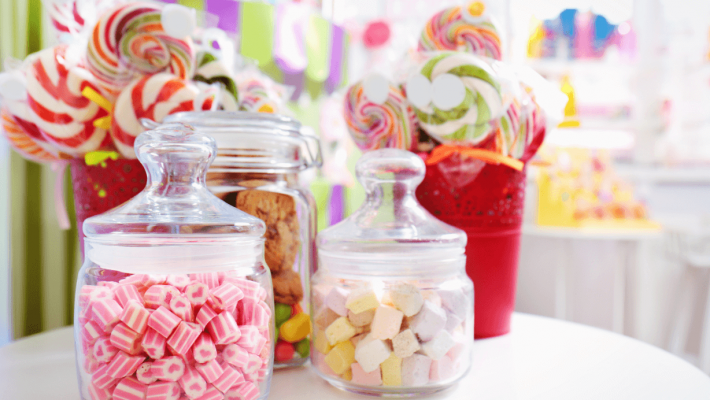Indiana has multiple butterfly seasons, starting from the arrival of the Monarch butterflies in early July to the migration of butterflies through the area during the fall. Imagine how utterly cool it would be to step outside and find yourself surrounded by a flutter of multi-colored wings and these beautiful creatures in your own backyard!
If you decide to plant a butterfly garden, you really can turn your backyard into a magical wonderland that draws these kaleidoscope-winged creatures right to you – and we can tell you how!
Why Plant a Butterfly Garden?
We’ve talked before about the need to protect and provide for our essential pollinators, and butterflies are among them.
Many butterfly species are designed to pollinate specific types of flowers, making them critical to the survival of those plants. By creating a habitat for butterflies, you are contributing to the conservation of local plant species and promoting a healthy ecosystem. This biodiversity support extends to other pollinators and beneficial insects, creating a more resilient and thriving environment. In addition, having a butterfly garden brings the following benefits listed below.
Educational Opportunities
If you have kids, a butterfly garden also offers a fantastic opportunity for parents to slip in some environmental education. Observing butterflies can help you and your children learn about the life cycles of these insects, from egg to caterpillar to chrysalis to adult. This hands-on learning experience fosters a deeper understanding and appreciation of nature.
Natural Pest Control
Butterflies can help keep unwanted pest populations in check. Caterpillars of some butterfly species feed on common garden pests, while adult butterflies attract predators that also consume pests. This natural pest control reduces the need for chemical pesticides, which is also critical these days in promoting a healthier garden and surrounding environment.
Aesthetic Appeal
There’s something undeniably magical about butterflies in a garden, especially when they gather en masse and visit frequently. Their presence adds movement, color and life to your landscape, enhancing the sense of wonder you can find in the natural world and the beauty of your garden as a whole.
How Do You Plant a Butterfly Garden?
You can, if you choose, overhaul your whole garden at once – or you can make it an ongoing process. Ultimately, the choice is up to you, but here’s how to get started.
Choose the Right Location
Selecting the right location is the first step for your butterfly garden. Butterflies are attracted to warmth and sunlight, so choose a sunny spot that receives at least six hours of direct sunlight each day. Pick an area sheltered from strong winds so you’re able to provide a safe haven for these delicate creatures. You may also want to consider the aesthetics of the spot you choose for your first plants, such as whether you want them visible from your favorite window or somewhere else.
Select the Appropriate Plants
This is the key to any successful butterfly garden. Butterflies are drawn to specific plants for nectar and as host plants for their larvae. Incorporate a mix of both in your garden to cater to the needs of butterflies at all stages of their life cycle.
Nectar plants that provide food for adult butterflies throughout the growing season include:
- Milkweed – Essential for Monarch butterflies, providing both nectar and a host plant for their larvae.
- Butterfly Bush (Buddleia) – Known for its large, fragrant flower clusters that attract many species of butterflies.
- Coneflowers (Echinacea) – Durable perennials with large and colorful blooms.
- Lantana – A heat-tolerant plant with clusters of small, vibrant flowers.
- Zinnias – Annuals that produce an abundance of bright flowers in summer.
Host plants, where butterflies lay their eggs and caterpillars feed on the leaves, include:
- Milkweed – Monarch butterflies lay their eggs on this plant, and the caterpillars feed on its leaves.
- Parsley, dill and fennel – These attract swallowtail butterflies, which lay their eggs on these herbs.
- Passionflower – A host plant for the Gulf fritillary and other butterflies.
Plant a variety of flowers that bloom at different times to provide a continuous food source. Arrange plants in layers to mimic natural habitats, with taller plants at the back and shorter ones at the front. This layering creates microhabitats and shelter for both your butterflies and other beneficial garden insects. Keep in mind that butterflies are heavily attracted to shades of purple and blue, so focus your efforts on plants with those color blooms.
Provide Water Sources and Shelter
Butterflies need water, but they prefer shallow, puddle-like sources – because they can drown easily.
Create a butterfly puddling station by filling a shallow dish with sand and water or add a birdbath with flat stones on which butterflies can perch. Puddling stations provide essential minerals and hydration for butterflies, which they absorb from the damp sand or mud. Ensure the water source is kept fresh and clean to prevent the growth of algae and bacteria throughout the summer and your butterflies will thrive even when the heat gets outrageous.
Butterflies also need places to rest and take cover from bad weather. Incorporate rocks, logs and shrubs into your garden design to provide the shelter they need. You can also install butterfly houses or small shelters specifically designed for them. Planting dense shrubs and creating brush piles can offer additional hiding spots and overwintering sites for butterflies and other insects.
Finally, eschew pesticides and other chemical treatments for your garden, since that can cause untold harm to both butterflies and other pollinators. Opt instead for organic gardening practices and use natural pest control methods, such as introducing ladybugs, praying mantises, and other natural predators to control garden pests, and weed by hand. Don’t be shy about adding a lot of mulch to keep weeds down, either – just use untreated mulch that doesn’t have chemicals added.
Planting a butterfly garden is a beautiful way to contribute to environmental conservation while enhancing the beauty of your own outdoor spaces. Whether you are an experienced gardener or just a beginner, creating a butterfly garden is a worthwhile project that can be part of your enduring legacy on the environment – so happy gardening!
amanda.phillips@talktotucker.combill.ingram@talktotucker.combrad.layton@talktotucker.comeditors-pickerina.pribyshchuk@talktotucker.comfeaturedlloyd.zimmerman@talktotucker.commark.callahan@talktotucker.commary.layton@talktotucker.compriscila.hale@talktotucker.comterri.mcgraw@talktotucker.com




